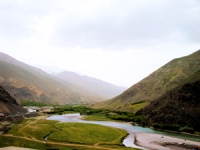Water sharing between Central Asian countries has been conflicting for quite a long time already.
Only 5% of population have access to safe drinking water and drainage in Tajikistan

Access to a clean drinking water and drainage still remains one of the most critical environmental problems in Tajikistan. Thus, only 5% of population live in the buildings connected to drainage network. Tajikistan also encounters problems in waste treatment, according to the report of the United Nations Economic Commission for Europe.
The given report assesses progress achieved by the country in environmental management since the first review in 2004.
The report says Tajikistan hosts rich water resources and has numerous problems in use and protection of water resources, which are explained by poor institutional structure and out-of-date water infrastructure.
Only one third of population has access to chlorinated drinking water. Around 30% of population use water from springs and underground sources, the rest population use water directly from rivers and distribution canals. Only 5% of population live in buildings connected to the drainage network.
Water supply and drainage networks have uninterrupted power supply, which leads to water pollution. Often interruptions in power supply limit water supply for several hours a day. Though overall improvement of the quality of water is observed since 2004, only 15% of samples meet bacteriological norms now.
As for waste treatment, the domestic solid waste collection system covers only urban population making around 26% of the country's population. The waste removal methods require immediate improvements, as even in the capital city the only dump does not meet sanitary norms and standards.
The tailings with mining wastes also pose threat to population health. Around 54.8 million tons of mining waste are still stored at inappropriate places in northern Tajikistan, close to the second biggest city of Khujand.
The report contains 47 recommendations for Tajikistan aimed to improve the country's environmental management practices.




